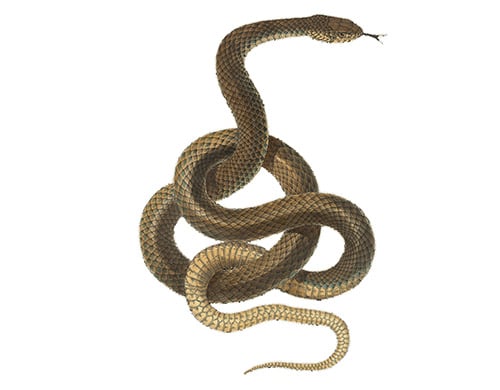
My cousin, Yakov Nagen, rosh kollel at Yeshivat Otniel, points out in his sefer “Awaken to a New Day,” a universal principle: that the parsha of the week has real-time relevance to current events.
There’s no greater current event then the yetzer hara attacking us every second of every day, and Parshat Parah is metaphorically symbolic of the yetzer hara—as any tumah is representative of the evil spirit.
There’s an earth-shattering story I recently read relating to extreme taiva caused by the yetzer hara.
There was a man who passed away in Bnei Brak, and after digging his grave to bury him, a snake was found in the grave. Those at the burial site immediately consulted the Chazon Ish about how to proceed. The Chazon Ish advised them to dig another grave on the other side of the cemetery.
Upon digging the grave, a snake was found again. They returned to the Chazon Ish with the news. The Chazon Ish said that nothing further could be done, and it must be that this person was so steeped in the physical world that his physical body would be consumed immediately.
I wondered how to attain some kind of positive lesson or perspective from this story. I looked to another gemara in Kiddushin. The gemara in Kiddushin tells the story of Rabbi Akiva who used to mock the yetzer hara. Immediately, a beautiful woman appeared on a tree and Rabbi Akiva ran to reach her. Then she suddenly disappeared, and it was announced in heaven, “If not for the Torah of Rabbi Akiva, he wouldn’t have been worth two cents, as he was fully subservient to the yetzer hara.”
The obvious question on this Gemara is that it’s unlikely Rabbi Akiva was learning when he ran after the woman. How then did the Torah of the past protect him? It must be that past Torah has present ramifications and can guard one from engaging in present sins.
The snake that was to immediately consume this man is symbolic of the snake of creation that was an external manifestation of evil. After Adam’s sin the snake became infused into everyone’s inner body and serves to trip us up at every moment. Though perhaps this man was so overcome with physical urges that not even his past Torah could save him, the story of Rabbi Akiva gives hope that our past learning can save us from oncoming dangerous situations.
Also, the man who was to be consumed by the snake was returning to dust, and though his physical body would be consumed, his soul would hopefully last forever.
My great-great-grandfather, a rav in Europe, points out that even the greatest tzadikim will endure suffering when their guf is separated from their neshama, as everyone has some tumah attached to their guf, which the neshama must separate from.
Let Parshat Parah be a reminder that ashes are symbolic of our final demise, and that by engaging in Torah we could protect our present life to the best of our abilities.
By Steven Genack
Steven Genack is the author of the upcoming book “Articles, Anecdotes & Insights,” Genack/Genechovsky Torah from Gefen Press.













